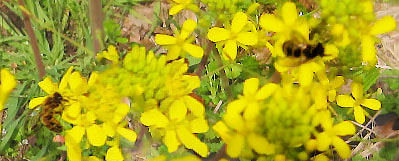The Week of Wakening Spring
Winter has vanished like a blindfold coming off. This week, we woke to sun instead of frost. Up at the woodpile there was a good-sized turtle, with clods of mud on her shell from digging out of her winter den. What a relief--I had been hoping turtles weren't hibernating in the riverbank when it got swept away last winter. Apparently, turtles hibernate up in the woods. I feel like I'm coming out of hibernation myself. A death in the family and other events took me away from home for a couple of months. The grass is long, the weeds are many, the greenhouse is empty, I've missed a whole season.......OK, stop that train of thought. It's great to be here. It is, actually, perfect. So, what can I do starting right now? It's still a good time to plant peas, lettuce, and greens. There's even time to sow tomatoes and peppers—they'll catch up. My experience matches Sunset Magazine's controlled-trial result: Smaller, younger transplants actually do better than larger, older ones. (no transplant shock) So all right, I'll just stop worrying and sow some tomatoes. And peppers. Lots of them. Right now, honeybees, bumblebees, and a gazillion kinds of little native bees and wasps have been working the yellow mizuna, turnip, and mustard flowers. Have you noticed that kale and mustard flowers smell like honey? The bees sure have! Mustard/kale flowers, arugula flowers, or cilantro flowers are a one of the best things that can happen right now. They make a delicious vegetable when they're young, like little broccoli. But even more important, they draw those gazillion little flying insects to your garden. In a little while, caterpillars and their ilk will show up, hungry. BUT, some of those those little gnat-sized wasps that have been drinking nectar from your kale flowers will lay eggs on or around the caterpillars....And the wasp's hatched-out larvae will eat the caterpillars!!! Other winged nectar-eaters will be hunting and eating aphids. And later, the various bees will pollinate your squash. The last couple of years, I've been hearing about zucchini plants that bloom and then the female flowers fall off without making a zucchini. That's what happens when you don't have enough pollinator insects. So, if you don't have any single or semi-double flowers in your garden, try to get some now, and plan for some later. Make your yard a pollinator destination. Allyssum is a good choice. It likes spring weather, grows fast, and makes millions of little white flowers that bees and butterflies love. Farms and vineyards plant it to draw pest-eating insects. If there are no little flowers at all in your garden, you could buy a six-pack of alyssum to feed beneficials til your seeds sprout. Miner's Lettuce works the same way, but is also a delicious, juicy salad green. Poppies are a beneficial insect magnet. Plant seeds quick, and barely cover them--they like light and cold soil. Calendula can be planted anytime, has a million uses, and attracts beneficials. Plant calendula seeds deep—they need dark to sprout. Blue cornflowers (bachelor's button) are perfect with them. When frost is over, cosmos, zinnia, sunflowers, and coreopsis are all easy to grow, fun to look at, and feed beneficials. I generally put a few zinnia seeds at the end of each corn block or squash row. Coreopsis and cosmos are lacy enough to fit easily with any vegetable. Just thinking about it is inspiring. I guess I'd better stop agonizing over jobs undone and go plant some seeds. Read more of Jamie's blog (and find the seeds she writes about!) at www.quailseeds.com
top | Newsletter Home |Table of Contents| Archive
|



